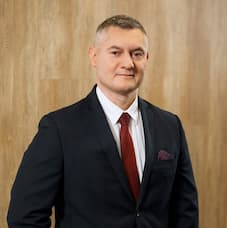Advances in the Welding of Materials
A special issue of Materials (ISSN 1996-1944). This special issue belongs to the section "Manufacturing Processes and Systems".
Deadline for manuscript submissions: 20 July 2024 | Viewed by 1763
Special Issue Editors
Interests: production engineering; manufacturing processes; material engineering; material characterisation; welding
Special Issues, Collections and Topics in MDPI journals
Interests: laser surface engineering; laser material processing; welding; coatings; the additive manufacturing of metal parts
Special Issues, Collections and Topics in MDPI journals
Special Issue Information
Dear Colleagues,
Welding is a strong branch within the industry, especially in regions with a high level of economic development. Welding includes the technologies of joining materials, surfacing, thermal spraying, soldering, and thermal cutting. Modern and advanced materials, with increasing strength, low density, and special properties, require the application of advanced methods and technologies of joining and processing. Structural steels with an increasingly high strength, even over 1700 MPa, are already used not only for structures such as crane booms, but also for car body structures. In addition, light metals and alloys, plastics, and composite materials are becoming more popular. Joining such materials and ensuring high-quality joints is difficult and requires the use of advanced welding methods and procedures.
This Special Issue aims to present the latest developments and advances in the field fusion, hybridity, electric resistance, and solid state welding of materials.
Research areas may include (but are not limited to) the following:
- Advanced fusion and solid state welding technologies of materials;
- Advanced electric resistance welding;
- Advanced soldering and brazing technologies;
- Advanced thermal cutting technologies;
- Advanced surfacing technologies;
- Additive methods based on welding technologies;
- The characterization of welded materials (microstructure, mechanical properties, etc.);
- The welding of HSS and UHSS steel grades, non-ferrous alloys, plastics, or composites.
Dr. Agnieszka Kurc-Lisiecka
Prof. Dr. Aleksander Lisiecki
Guest Editors
Manuscript Submission Information
Manuscripts should be submitted online at www.mdpi.com by registering and logging in to this website. Once you are registered, click here to go to the submission form. Manuscripts can be submitted until the deadline. All submissions that pass pre-check are peer-reviewed. Accepted papers will be published continuously in the journal (as soon as accepted) and will be listed together on the special issue website. Research articles, review articles as well as short communications are invited. For planned papers, a title and short abstract (about 100 words) can be sent to the Editorial Office for announcement on this website.
Submitted manuscripts should not have been published previously, nor be under consideration for publication elsewhere (except conference proceedings papers). All manuscripts are thoroughly refereed through a single-blind peer-review process. A guide for authors and other relevant information for submission of manuscripts is available on the Instructions for Authors page. Materials is an international peer-reviewed open access semimonthly journal published by MDPI.
Please visit the Instructions for Authors page before submitting a manuscript. The Article Processing Charge (APC) for publication in this open access journal is 2600 CHF (Swiss Francs). Submitted papers should be well formatted and use good English. Authors may use MDPI's English editing service prior to publication or during author revisions.
Keywords
- welding
- surfacing
- cladding
- thermal spraying
- thermal cutting
- brazing
- soldering







